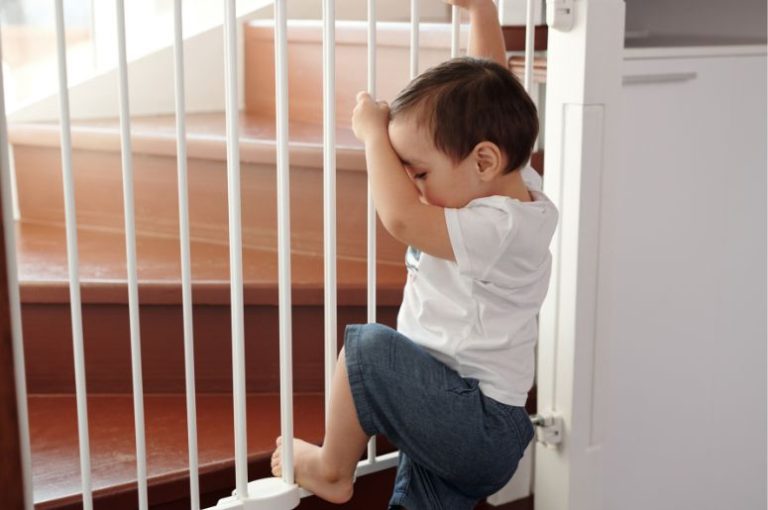The first six weeks at home with your baby – possibly the most exciting and most tiring days of your life! Read about how to survive the first six weeks.
The first few days
Both of you are exhausted following the birth and hopefully some of your much needed sleep will coincide! You may also be recovering from a c-section, or a complicated pregnancy or birth, so be sure to take care of your own needs and ask for help and support whenever you need it. The main focus for the baby at this time is usually establishing feeding – the baby received all its nutrients from you in pregnancy, and now you both need to learn together how to meet baby’s needs outside of the womb.
If you’re at home then be sure to have arranged sufficient support for yourself, and any other children. If you’re in hospital or a birth centre your meals and ‘hotel services’ will be taken care of, but it can be difficult to rest in an unfamiliar environment.
Keeping baby clean in those first few weeks
Your baby will receive their first bath – which they may or may not love – and learn how it feels to be clothed and this is something else they may object to, strongly! Initially, your baby may have vernix on the skin (creamy protective substance that covers their skin in the womb), which will be re-absorbed gradually.
The cord area should be kept clean and dry, as the cord shrivels and drops off over the next week or so.Use a cotton bud dipped in cooled, boiled water to clean around the cord area.
Sometimes there will be the odd spot of blood on the nappy or vest as the cord separates – but the cord site should never ‘bleed’ as such. It may be smelly for a day or two, as the cord drops off by a process of dry gangrene. Check that the skin around the cord is normal and pink (not inflamed or red). Letting fresh air get to it will help it heal quicker.
If baby’s finger nails are long and scratchy, the best solution is to gently tear them – do not use scissors as this may also cut the skin. If you don’t keep baby’s nails cut, then they can scratch their own faces in the crib.
You will learn how to ‘top and tail’ your baby – washing the face, cleaning the eyes with cooled, boiled water if they’re sticky, and keeping their nappy area clean.
This is a major feat in the first few days as the first few ‘poos’ will be black and sticky (meconium); this soon changes to green, then yellow, as the milk moves down the gut. Mustard yellow is the normal colour for ‘baby poo’ for as long as they are taking milk only. Again, cotton wool, dipped in cooled, boiled water are soft on baby’s bum and won’t rub too much.
The genitals of boys and girls are self cleaning – unless a dirty nappy has been explosive! – in which case gentle cleaning with the cotton wool and water will suffice.
Little girls may have a ‘pseudo period’ causing a little red discharge, as your hormones are excreted from their body. All perfectly normal.
Little boys sometimes pass urate crystals in their urine, which leave a pink mark on the nappy. If you’re unsure, ask your midwife to check the nappy to check whether it is normal.
Settling your baby in the first six weeks
Unfortunately there is no magic answer to this one – if only we knew what was wrong! However, having a checklist of ‘common’ baby complaints may help:
- Is baby thirsty or hungry? This is usually the first reason for complaints.
- Does baby have a wet or dirty nappy? This seems obvious, but 4-6 weeks in you’ll realise how easy it is to forget when you last changed baby.
- Could baby have wind or be constipated? Wind is a really common complaint. Always burb baby after feeding, as wind can be quite painful for them.
- Is baby tired, or over tired? It’s really easy to miss the sleep ‘window’ for baby at this age. It’s surprising how quickly an hour can pass by when you’re changing, feeding, burping and then changing again. If baby gets overtired and simply can’t sleep, try to relax, get baby up and just start the routine again.
After offering baby a feed, checking the nappy and patting their back, it is now down to a little imagination. You can pace the floor (a sling is useful), put some music on and dance with your baby, try walking out with your pram. Basically there is no ideal solution, it’s trial and error!
This can be extremely exhausting, however, so ensure you ask for help (don’t be proud about accepting any offer of help – people genuinely want to help a new mum out). Occasionally you may have to let your baby cry – leave them in a safe place (in their cot, or strapped into their pram) and walk away to somewhere else in the house or garden for a break. Crying babies can be wearisome!
Keeping baby safe in those early weeks
Sun protection for a new baby
There are 2 main principles:
- Cover the skin with protective clothing
- Keep baby in the shade
Lots of sun screens are not recommended for babies under 6 months so, as far as possible, it’s just best to keep babies covered and out of the sun.
SIDS prevention
SIDS stands for Sudden Infant Death Syndrome, and can be summarised by 4 main points:
- ALWAYS lie babies on their back to sleep, and place baby’s feet at the foot of the cot, to ensure baby doesn’t wriggle under the covers.
- Don’t let baby get too hot or too cold (feel your baby’s chest or the back of their neck – hands and feet are always cold in newborns)
- Do not smoke, or allow anyone else to smoke, near your baby
- If you’re AT ALL concerned for your baby’s well-being, then see your doctor
Car seats
Ensure that you have a properly fitted car seat for every journey you do with your child. You can usually hire portacots that babies use for the first year. These make getting baby in and out of the car, and into a pram safe and simple. Always make sure the pram’s brakes are engaged before you put baby in!
The first couple of weeks
In order to enjoy this time and get sufficient rest, do limit your visitors to the ‘useful types’- the ones that arrive with a ‘kiwi plate’ and leave with your ironing! Everyone wants to come and see the new baby of course, but try to schedule them in, and don’t be shy to ask people to leave if you’re feeling tired.
The baby’s routine is likely to be chaotic, chances are that you’re having little sleep and have one or two worries about baby or your own recovery. Some babies get a rash, some get sticky eyes, some do not move their bowels for days on end, some Mums bleed heavily after birth, mastitis can be a risk if your baby isn’t breastfeeding efficiently enough.
All these worries can be checked out with your midwife, who will be visiting you regularly at home. Any major concerns should be taken to your midwife/ doctor immediately – you should have access to your midwife 24 hours a day.
2 – 6 weeks after the birth
The baby bliss has worn off!
This can be the most stressful time if you’re not managing to get much sleep and your support is less now that your partner has returned to work/Mum has left to return home.
In most cases the feeding does settle into some sort of routine at this time (be warned- a growth spurt often occurs around 6 weeks and baby wants to feed like never before!). The night feeds are usually still frequent, although they may settle to 2 feeds a night by 6 weeks of age. Try not to compare with friends too much – every baby is different and feeds differently at various stages, so easy nights now do not always guarantee easy nights to come.
How does something so small command so much attention – day and night!
Useful Articles and resources
Read more about the role of a Doula, you might also be interested in employing an au pair.





